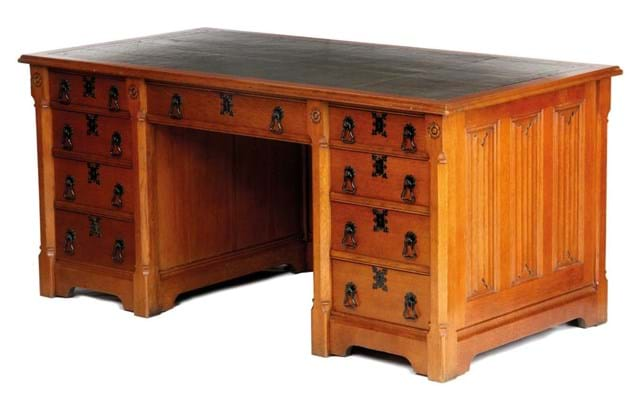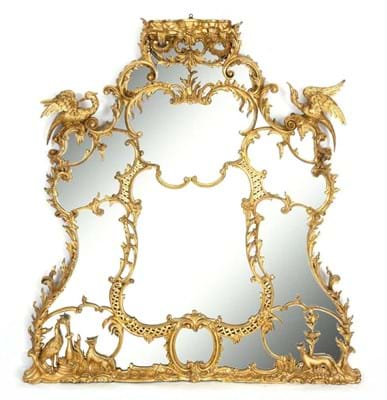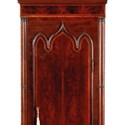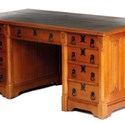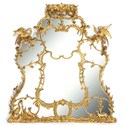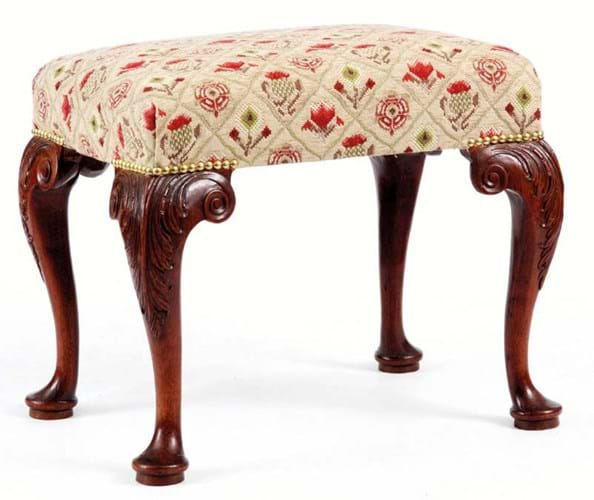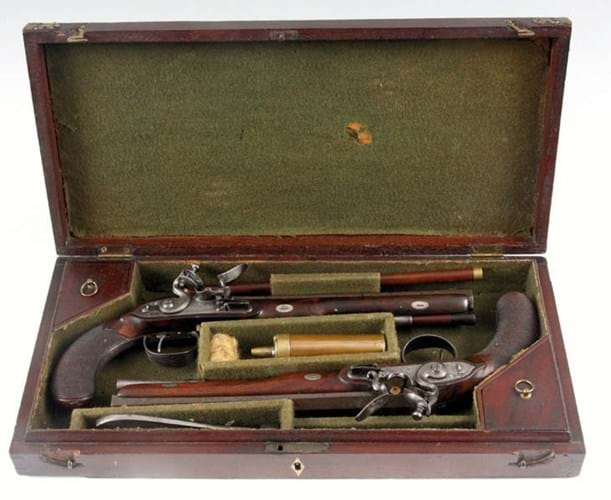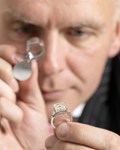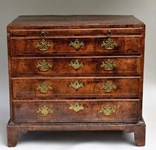“The clock and furniture sections were our best sections by far,” is not the sort of post-sale quote from an auctioneer one hears much these days, particularly as the clocks referred to by Michael Scott were largely longcases.
Before resurrecting the Yorkshire auction house of Hutchinson Scott (20% buyer’s premium) with clocks expert Paul Hodson (see Around the Auction Houses, ATG last week, No 2329), Scott was a furniture dealer and knows the fate of other predictions about a revival of the market as a whole.
But there were some good results for quality furniture across the country in February as well as at Hutchinson Scott’s new base at Embsay near Skipton on January 25-27.
Over the three days 81% of the 965 lots sold, totalling £567,000, with a good mix of trade, private and overseas buying.
But the 344 furniture and clocks which comprised the Saturday sale were, said Scott, “our best sections by far”.
He added: “The day took more than £300,000 with 158 of the 168 clocks getting away and a similar result with the furniture. Good furniture is in high demand – the market is strong for the right lot.”
Walnut welcome
Local collectors went well above estimates to secure two pieces of late 17th-early 18th century figured walnut.
A 6ft (1.83m) tall George I herring bone banded chest-on-chest made £3800 and a William and Mary herring bone-inlaid bureau, just 2ft 4in (72cm) wide with a fall and fitted interior, tripled the mid-estimate at £4400. The 22in (56cm) wide George I walnut dressing stool illustrated above was a UK trade buy at £4200 against a £1200-1800 estimate.
A William and Mary floral marquetry cabinet inlaid with stained ivory of flowers and birds and with doors revealing an interior of a cupboard and drawers lacked its stand, but sold at £3800.
Also going above expectations at £3800 was a highly decorative, late 17th century Continental collector’s cabinet.
Measuring 3ft 7in (1.09m) wide and 4ft 4in (1.32m) high on its bobbin-turned stand, its top and sides of boxwood-strung and rosewood-banded walnut panels and its ebony-banded front enclosed a fitted interior of tortoiseshell and ivory-banded drawers.
Ornate offering
The most ornate English offering was a George III Chippendale-style gilt-gesso carved overmantel mirror.
With sectional plates, the 5ft 5in (1.66m) high mirror featured Ho Ho birds to the shoulders and foxes to the base. It sold within estimate to a Philippines collector at £8800.
Names, as ever, added a premium to a couple of pieces.
An elegant 4ft (1.2m) wide Regency mahogany hall bench was catalogued as in the manner of Charles Heathcote Tatham (1772- 1842) – a respected architect and designer whose life would have made a three-volume Victorian novel. Estimated at £2000-3000, it sold to the UK trade at £6200.
More firmly identified was a 5ft 4in (1.63cm) oak Gothic revival desk designed by Pugin and stamped to the top drawer by maker Gillows of Lancaster.
The handles and lock plates were also designed by Pugin and probably made by Hardman & Co. A desk to this design was made for the prime minister’s office c.1844.
Against a £3000-5000 estimate, this one sold to the London trade at £6800.
Longcases on a high
Among the clocks, longcases spanning two centuries took the higher prices, each running counter to the belief that really tall examples are shunned by private buyers who do not have the space for them.
The earliest was an early 18th century piece by the London maker Joseph Windmills.
The six finned-pillar, month-going movement striking the hours on a bell was housed in an 8ft 10in (2.7m) tall burr walnut case with an arched glazed door. Estimated at £8000- 12,000, it sold to a private buyer at £13,000.
At the other end of the timescale came an equally tall Art Nouveau style clock by Mappin & Webb which sold on its lower £8000 estimate.
The three-train weight-driven movement with deadbeat escapement and Harrison maintaining power chiming the quarters was in a mahogany case with a gilt brass arched dial and glazed door.
Topping the clocks was an 8ft (2.48m) late Georgian four-train musical and tidal flamed mahogany longcase.
The eight-day weight-driven movement played seven tunes on 12 bells and struck the quarters and hours on three separate bells.
The 14in (35cm) arched dial featured tidal times and rotating moon dial in the arch with a painted scene of Nelson celebrating victory at the Battle of the Nile.
Pitched at £6000-8000, the clock sold to another private buyer at £16,200.
“The market is definitely coming back for the good-quality pieces, and it seems that privates are looking to buy direct from auction,” said Scott.
“The musical longcase was a prime example. Any model which is very hard to replace and is high quality is wanted by private collectors.
“We had three of them after this lot, which pushed the price up.”
Surprise competition
However, trade specialists provided the surprise of the section, competing for the oak case of a rare Queen Anne lantern clock.
The front and sides to 6ft 10in (2.1m) tall case featured original scroll and leaf work carving and the door bore the carved initials TB and date 1701.
Few of these have survived and it sold to the trade at £3000 against a £400-600 estimate.
The first two days of the sale showed Hutchinson Scott expanding beyond the founders’ traditional areas.
Further highlights
An impressive arms and armour section was led by a cased pair of late 18th century flintlock duelling pistols signed to the octagonal barrels and lockplates Wogdon & Barton, London.
With stylised pineapple finials and figured walnut stocks, the pair went to an American collector just above top estimate at £15,200.
Among the decorative items a cold-painted bronze Egyptian Dancer by Demetre H Chiparus was estimated at £10,000-15,000.
Standing 2ft 4in (72cm) tall including the marble plinth, it was, said Scott, “a large-sized, super untouched piece” and bidders agreed to the extent that it sold to the southern English trade at £9500.



